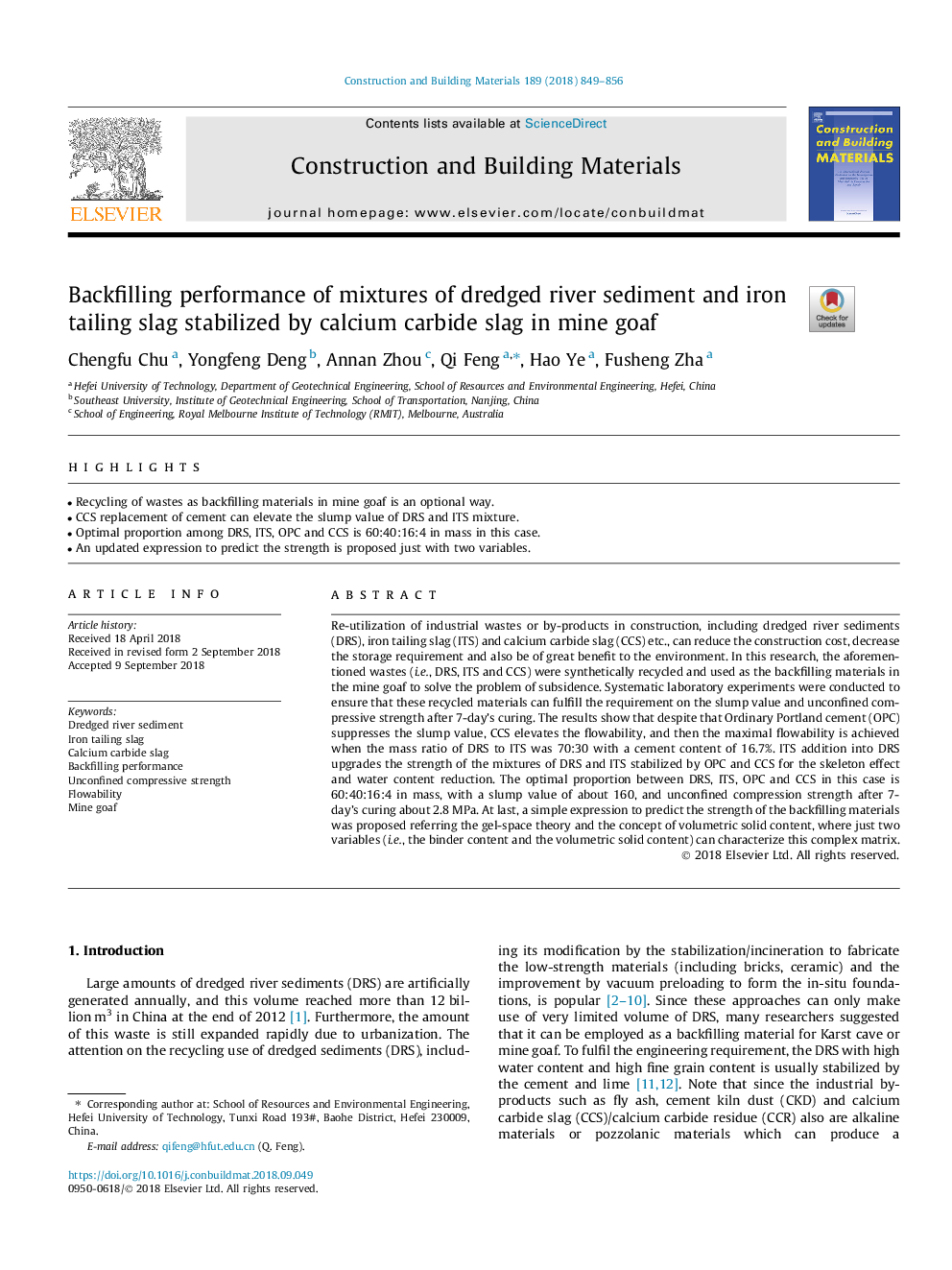| Article ID | Journal | Published Year | Pages | File Type |
|---|---|---|---|---|
| 10145762 | Construction and Building Materials | 2018 | 8 Pages |
Abstract
Re-utilization of industrial wastes or by-products in construction, including dredged river sediments (DRS), iron tailing slag (ITS) and calcium carbide slag (CCS) etc., can reduce the construction cost, decrease the storage requirement and also be of great benefit to the environment. In this research, the aforementioned wastes (i.e., DRS, ITS and CCS) were synthetically recycled and used as the backfilling materials in the mine goaf to solve the problem of subsidence. Systematic laboratory experiments were conducted to ensure that these recycled materials can fulfill the requirement on the slump value and unconfined compressive strength after 7-day's curing. The results show that despite that Ordinary Portland cement (OPC) suppresses the slump value, CCS elevates the flowability, and then the maximal flowability is achieved when the mass ratio of DRS to ITS was 70:30 with a cement content of 16.7%. ITS addition into DRS upgrades the strength of the mixtures of DRS and ITS stabilized by OPC and CCS for the skeleton effect and water content reduction. The optimal proportion between DRS, ITS, OPC and CCS in this case is 60:40:16:4 in mass, with a slump value of about 160, and unconfined compression strength after 7-day's curing about 2.8â¯MPa. At last, a simple expression to predict the strength of the backfilling materials was proposed referring the gel-space theory and the concept of volumetric solid content, where just two variables (i.e., the binder content and the volumetric solid content) can characterize this complex matrix.
Related Topics
Physical Sciences and Engineering
Engineering
Civil and Structural Engineering
Authors
Chengfu Chu, Yongfeng Deng, Annan Zhou, Qi Feng, Hao Ye, Fusheng Zha,
